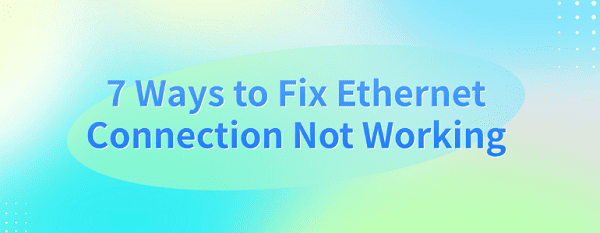
An Ethernet connection not working is a common problem that can arise due to a variety of factors, ranging from hardware issues to software or driver-related problems. In this guide, we will explore common reasons behind an Ethernet connection failure and provide practical solutions to resolve the issue.
1. Check Your Physical Connection
The first step in troubleshooting any Ethernet connection issue is to ensure that the physical connection is intact. Sometimes, the problem can be as simple as a loose or faulty Ethernet cable, or a misconnected port.
Check the Cable: Inspect the Ethernet cable for any visible signs of damage such as fraying or pinched areas. If the cable looks damaged, try using a different one to see if that resolves the issue.
Test the Port: Check both the port on your computer and the port on the router or switch. Ensure that the Ethernet cable is securely plugged in at both ends.
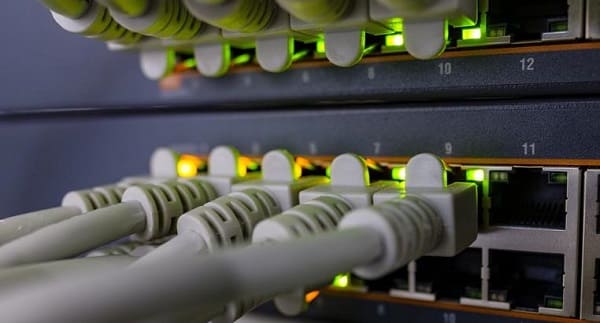
Try a Different Port: If your computer has multiple Ethernet ports or your router has multiple Ethernet sockets, try switching to another port to rule out a faulty port.
Reboot Your Devices: Sometimes, a simple reboot of your computer and router can fix minor connection issues caused by network congestion or temporary glitches.
2. Verify Your Network Adapter Settings
If the hardware connections are fine, the next thing to check is your computer's network adapter settings. Incorrect settings or misconfigurations could be preventing your Ethernet adapter from working properly.
Open Device Manager: On your computer, press Windows + X and select "Device Manager". Scroll down to "Network adapters" and find your Ethernet adapter.
Check for Disabled Adapter: Ensure that your Ethernet adapter is enabled. Right-click the adapter and select "Enable" if it is currently disabled.
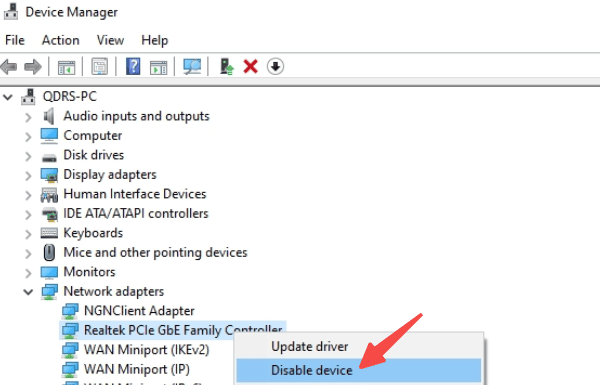
Set IP Configuration: Go to "Control Panel > Network and Sharing Center > Change adapter settings".
Right-click on your Ethernet connection, select "Properties", and click on "Internet Protocol Version 4 (TCP/IPv4)". Ensure that your computer is set to automatically obtain an IP address (DHCP).
3. Reset Your TCP/IP Stack
Sometimes, the problem can be related to corrupted network settings, which can prevent your Ethernet connection from working properly. Resetting the TCP/IP stack can resolve these issues.
Open Command Prompt as Administrator: Press Windows + X and select "Windows PowerShell (Admin)".
Reset TCP/IP Stack: Type the following command and press Enter:
netsh int ip reset
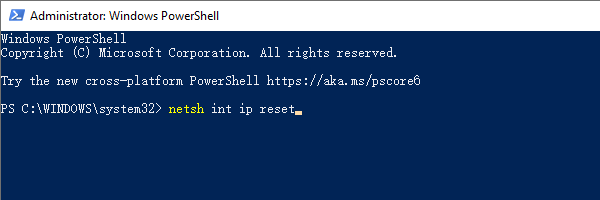
Restart Your Computer: Once the command has been executed successfully, restart your computer to apply the changes.
4. Update or Fix Network Drivers
Outdated or corrupted drivers are a common cause of Ethernet connection issues. If your network drivers are not functioning properly, your computer may not be able to establish a connection, even if the physical connection and settings are correct.
Download and Install Driver Sentry: If you're unsure about your Ethernet drivers, you can use a reliable driver update tool like Driver Sentry. This software scans your system for outdated, missing, or corrupted drivers and provides a straightforward way to update them.
Run a System Scan: Once Driver Sentry is installed, launch the program and let it scan your system for any issues with your network drivers.
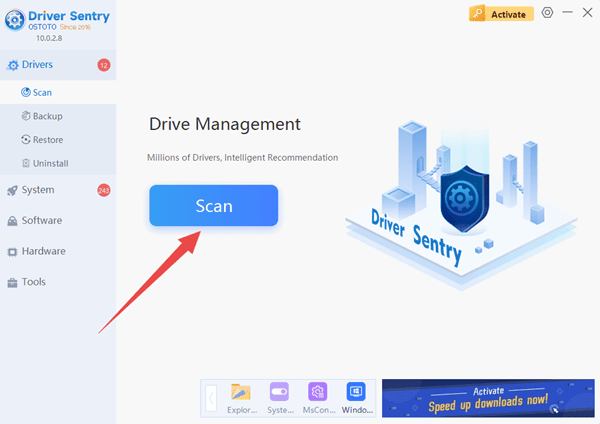
Upgrade Network Drivers: If outdated or corrupted network drivers are found, follow the prompts within Driver Sentry to download and install the latest drivers. This should automatically fix any driver-related issues that could be preventing your Ethernet connection from working.
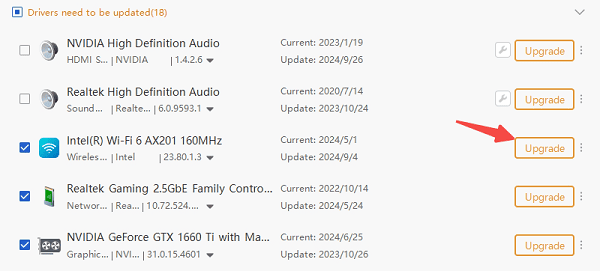
Reboot Your System: After updating the drivers, restart your computer to ensure that the changes take effect and check if your Ethernet connection is working properly.
5. Disable and Re-enable the Ethernet Adapter
Sometimes, the network adapter may have issues that can be resolved by disabling and then re-enabling it. This refreshes the adapter and can help clear any temporary faults that are preventing the connection.
Go to Network Connections: Open "Control Panel > Network and Sharing Center > Change adapter settings".
Disable the Adapter: Right-click on your Ethernet connection and select "Disable".
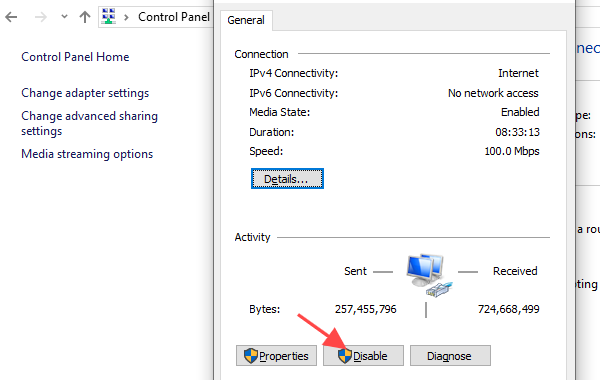
Wait a Few Seconds: Wait for 10-15 seconds before re-enabling the adapter.
Re-enable the Adapter: Right-click on the Ethernet connection again and select "Enable".
Test the Connection: Once the adapter has been re-enabled, check whether the Ethernet connection has been restored.
6. Check for Router or Modem Issues
The issue might not be with your computer but with your router or modem. Sometimes, a simple router reboot can fix network connectivity problems. Additionally, issues with your Internet Service Provider (ISP) or modem may cause Ethernet connection failures.
Reboot the Router/Modem: Unplug your router and modem from the power source, wait for 30 seconds, and then plug them back in. Wait for the lights to stabilize before testing the connection again.
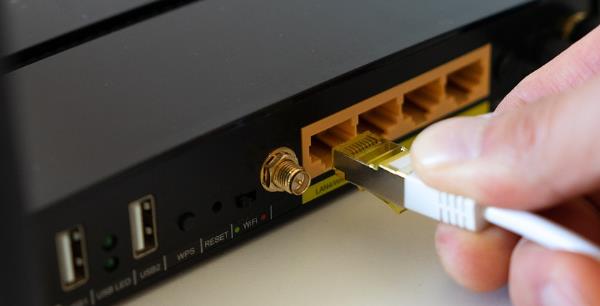
Test with Another Device: If possible, try connecting another device (such as a laptop or another computer) to the same Ethernet port or router. If the other device also cannot connect, the issue may lie with the router or ISP.
Check ISP Status: Contact your ISP to confirm if there are any outages or issues in your area that could be affecting your connection.
7. Check for Malware or Security Software Interference
In some cases, malware or overly aggressive security software may interfere with your network connection. This can result in your Ethernet connection not working properly, even if everything else appears to be functioning correctly.
Run a Malware Scan: Use your antivirus software to scan your system for any malware or potentially unwanted programs that could be affecting your Ethernet connection.
Check Firewall and Antivirus Settings: If the malware scan does not detect anything, check your firewall and antivirus settings to ensure they are not blocking network access. Temporarily disable the firewall or antivirus and test the connection to see if the issue is resolved.
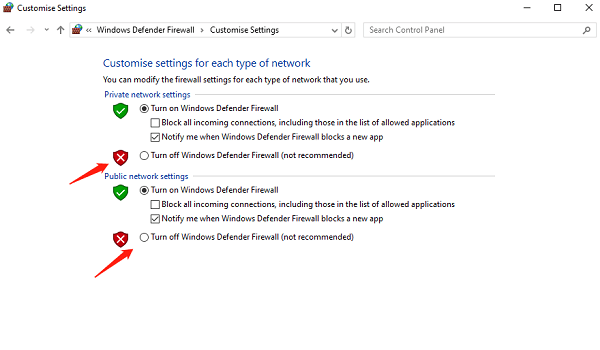
Perform a System Restore: If you suspect that recent changes to your system might have caused the issue, you can perform a system restore to a point where the Ethernet connection was working.
By following the troubleshooting steps outlined in this guide, you can systematically identify and resolve the issue. If the problem persists after trying all of these solutions, it may be worth seeking assistance from a professional technician to ensure that no deeper hardware issues are at play.
See also:
Methods to Resolve Nvpcf.sys BSOD Error
Optimize Windows Graphics Performance for Smooth Gaming